What Hi-Fi? Verdict
Philips plays to its strengths with another great OLED TV at a great price
Pros
- +
Exceptionally sharp and punchy image
- +
Better sound than most
- +
Substantial overall feature set
Cons
- -
The LG C2 is even better for gaming
- -
Requires more picture adjustment than most
- -
Sony does motion even better
Why you can trust What Hi-Fi?
In recent years, Philips has won plaudits for producing market-leading OLED TVs at aggressively low prices. In truth, these OLED TVs have been priced significantly lower than the performances have justified, and every year we half expect the company to ask for more money for its new models.
That time may yet come, but it’s thankfully not now: the 48OLED807 continues the trend by significantly outperforming its price tag.
Price
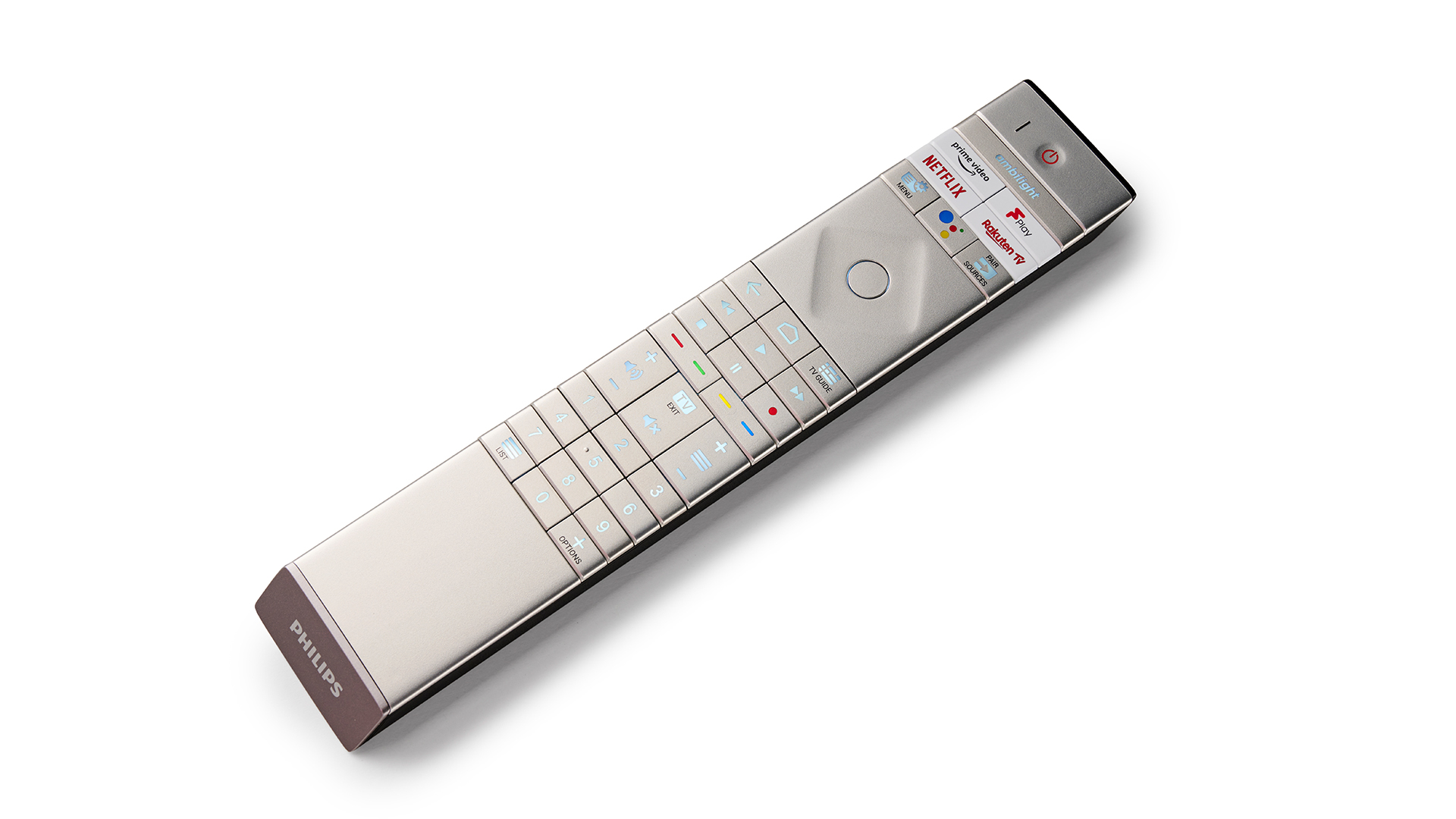
The Philips 48OLED807 is currently priced at £1249, which is around $1420 / AU$2125, though Philips OLED TVs aren’t currently sold in the US or Australia.
Its key rivals are the excellent Sony XR-48A90K (£1499 / $1398 / AU$2995), the Panasonic TX-48LZ1500 (£1599), and the LG OLED48C2 (£1099 / $1300 / AU$2376). While prices obviously fluctuate fairly wildly, in the long run we expect the Philips OLED807 to maintain a similar price to the LG C2 and for the Sony A90K and Panasonic LZ1500 to continue to be priced higher than both.
If you want a bigger TV, the OLED807 is also available in 55-inch, 65-inch and 77-inch sizes. If you want a 42-inch OLED, you’ll have to look to LG or Sony.
Design
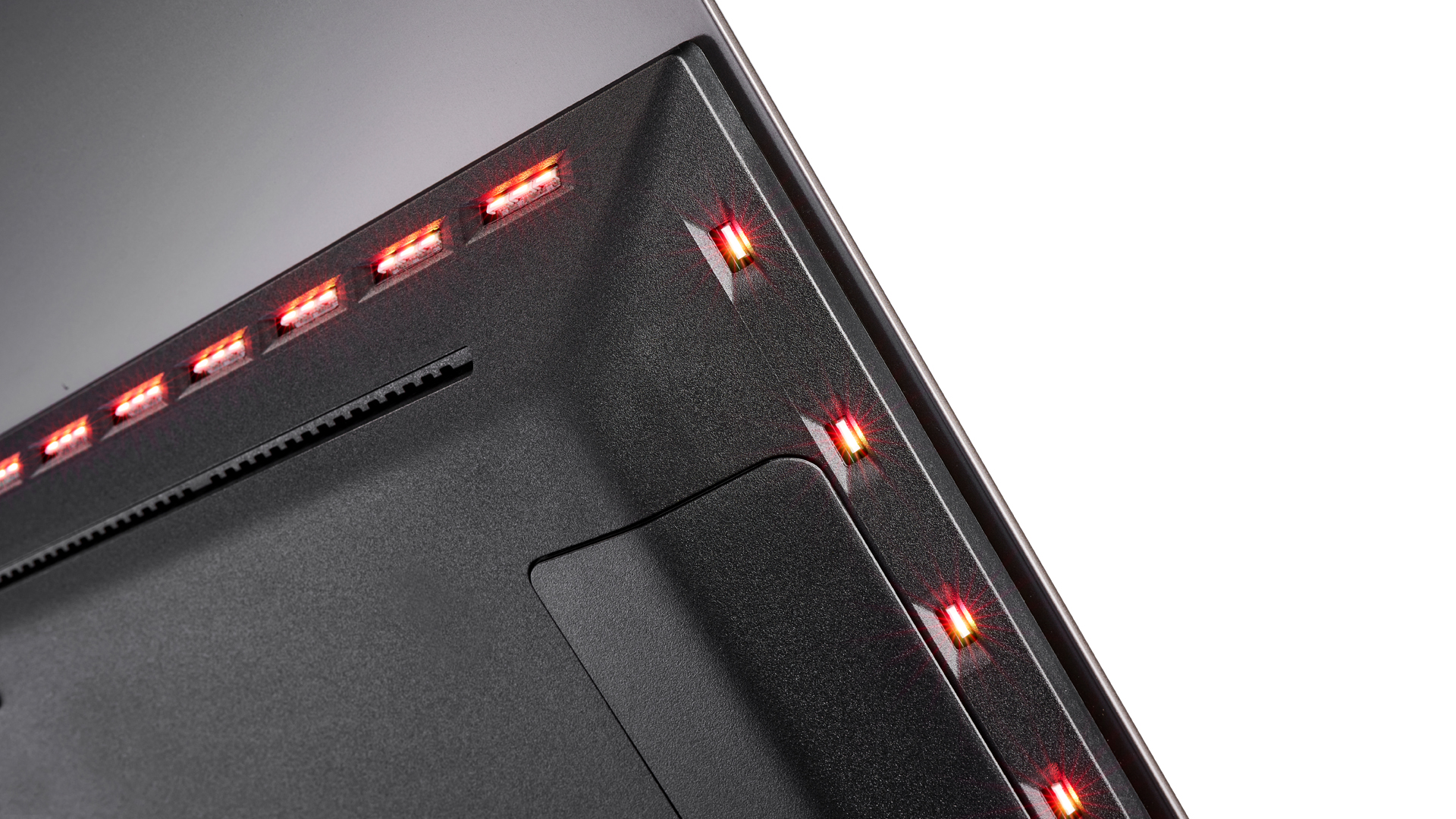
We were rather fond of the minimalist, very low-profile feet of the OLED806 (and the OLED805 before it), so the move to a new pedestal stand isn’t entirely welcome. Said pedestal is fairly elegant, though, and it goes together easily. What’s more, it allows the TV to swivel, which is a real rarity these days and something that some people will really appreciate. Unfortunately, the stand’s glossy finish reflects the light from the screen in a way that can be rather distracting when watching a movie in a dark room.
Without the stand, the OLED807’s design is much like that of the OLED806. The screen is surrounded by a flush black bezel (that’s very slightly slimmer than before) that is itself framed by a super-thin dark grey metal edge. The set is thicker than most OLEDs, measuring 6.8cm at its thickest point, which is towards the bottom of the chassis. Towards the top there’s nothing but a 4mm-thick panel.
Features
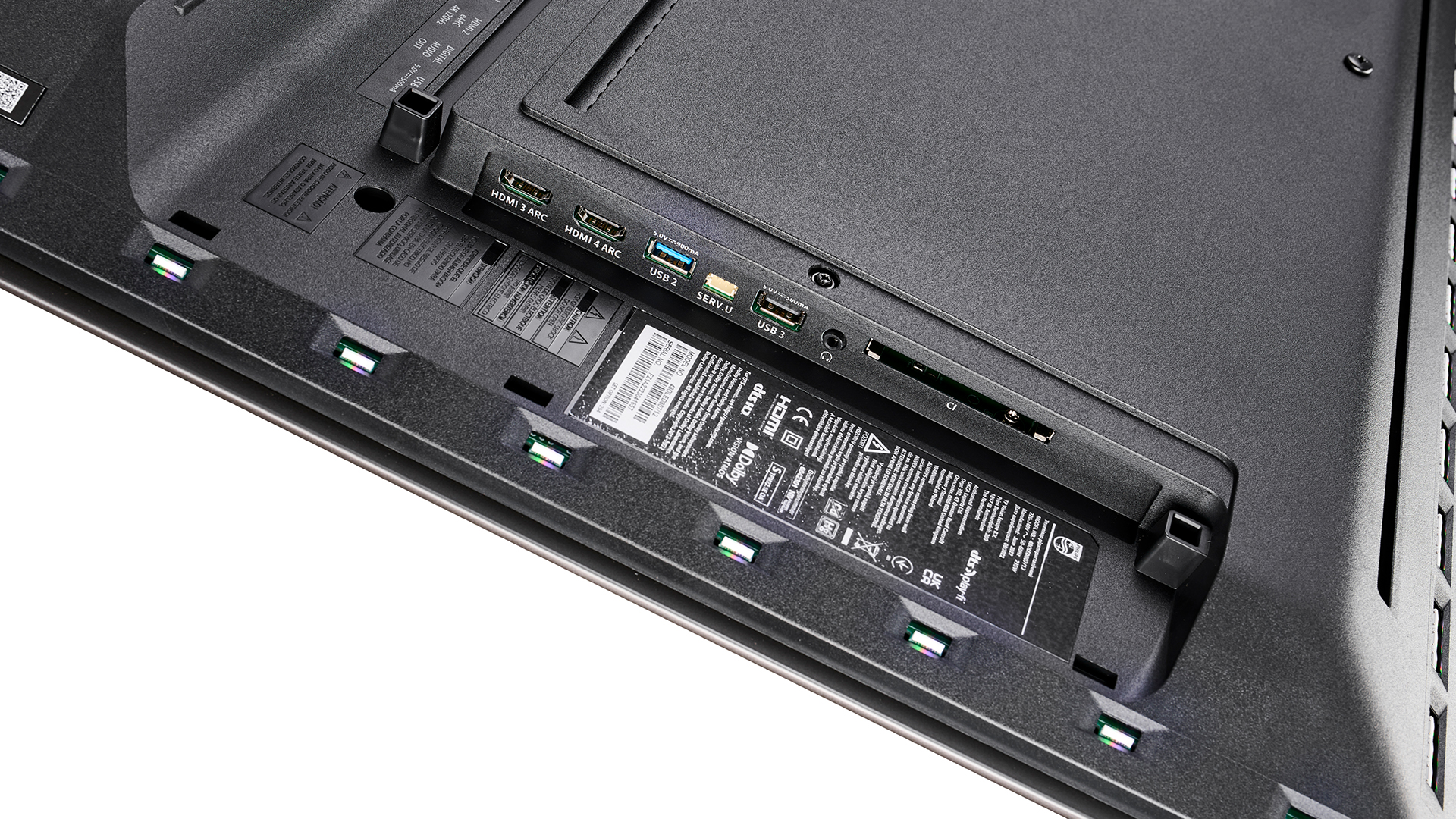
One possible reason for Philips OLEDs generally being thicker than those of other brands could be because they feature Ambilight. For those not already acquainted, Ambilight involves a series of LEDs embedded around the rear of the set that extend the on-screen action onto the wall behind and around the TV in the form of coloured light. Having already upgraded the 800-series’ Ambilight system from three sides to four with last year’s OLED806, Philips has this year introduced what it refers to as Next Generation Ambilight, which involves each LED being controlled individually for more accurate and precise matching to the image on the screen. The difference isn’t massive in action but it does make a very cool (and unique) feature even better. If you don’t like the dynamic light show that Ambilight offers in the ‘Follow Video’ mode, you can simply turn it off or use it to create contrast-enhancing, eye strain-reducing bias lighting.
Also arranged on the rear of the set are its connections, which include four HDMIs, three USBs, an optical output and even a traditional 3.5mm headphone socket. Of the four HDMI sockets, two are 48Gbps 2.1 affairs with full support for 4K/120Hz. All four of the HDMIs support VRR (variable refresh rate) and ALLM (auto-low latency mode), and the TV supports Dolby Vision gaming (up to 60Hz) and has HGiG for more accurate HDR in games.
As with most TVs with just two HDMI 2.1 sockets, one also handles eARC. If you use that to connect a soundbar or AVR to the TV, you’ll be left with just one HDMI 2.1 socket. However, unlike other brands, Philips has built standard ARC support into all three of the remaining HDMIs so that one of the lesser sockets can be used for sound, leaving both of the HDMI 2.1s free for your Xbox Series X, PS5 and/or gaming PC. It’s true that, unlike eARC, ARC can only handle the lossy version of Dolby Atmos, but considering that’s the only version that streaming services output, there’s no real downside to Philips’ workaround here, and we only wish that the likes of Panasonic and Sony would follow suit.
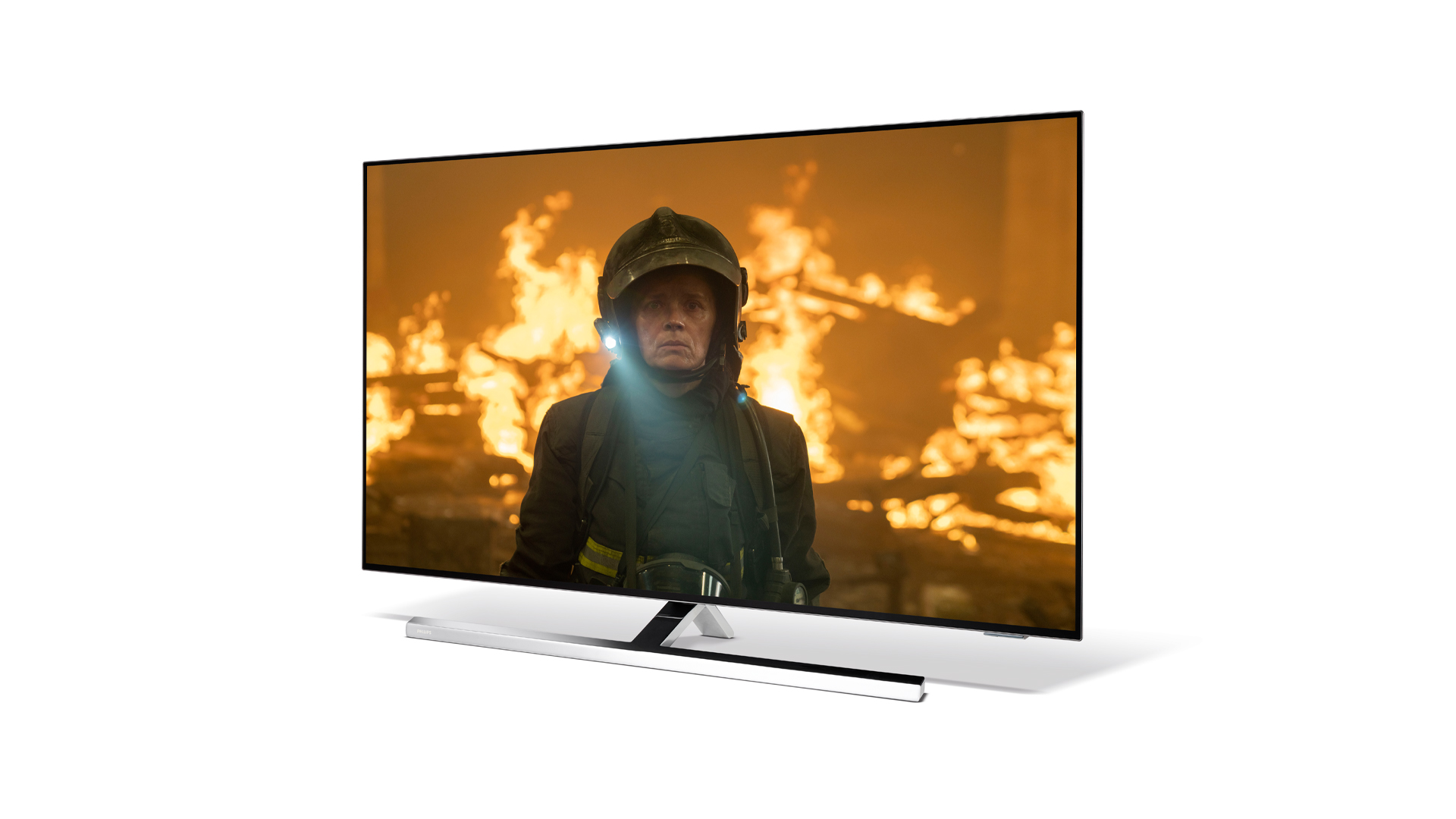
Screen size 48 inches (also available in 55in, 65in, 77in)
Type OLED
Resolution 4K
HDR formats HLG, HDR10, HDR10+, Dolby Vision
Operating system Android TV 11
HDMI inputs x4
HDMI 2.1 48Gbps, x2
Gaming features 4K/120, VRR, ALLM, HGiG, Dolby Vision gaming (up to 60Hz)
ARC/eARC eARC
Optical output Yes
Dimensions (hwd, without stand) 61 x 107 x 6.8cm
Some people will never connect an external source to their new TV, and they’ll still have plenty to watch on the Philips thanks to the app-packed Android TV 11 operating system. Other than Now, every streaming service you’re likely to want or need is on board, and those that should support HDR10, HDR10+, Dolby Vision and/or Dolby Atmos do so here. If you do plug in your aerial, Freeview Play will handle all of your TV channels and catch-up content, though individual apps are also provided for all of the UK’s terrestrial channels.
The Android TV system is very snappy and responsive here, and certainly more so than on last year’s Philips TVs. However, this 11th version’s attempts to provide a more personalised, recommendations-based user experience are somewhat hampered by the fact that it only currently taps into five apps, only three of which (Prime Video, Apple TV and Disney+) you probably use, for its recommendations.
As is de rigueur in the annual cycle of TV releases, the OLED807 has an upgraded processor when compared to its predecessor. The so-called 6th Gen P5 brings with it what Philips refers to as “Ambient Intelligence”. This basically involves the TV adjusting its brightness, colour and contrast based on ambient lighting conditions. It works rather like Dolby Vision IQ, and is most useful when used to prevent a loss of shadow detail when watching the TV in a well-lit room. Unlike Dolby Vision IQ, it works with all signal types, though TVs that do support Dolby Vision IQ tend to also have a similar solution for non-Dolby video signals.
Ultimately, the Dark Detail Optimisation option is worth trying out and can certainly reveal dark detail that would otherwise be lost, and the Eye Care feature could be useful for some people, but we’re less convinced by the Colour Temperature Optimisation feature, which makes footage look too blue when the living room lights are on.
Picture
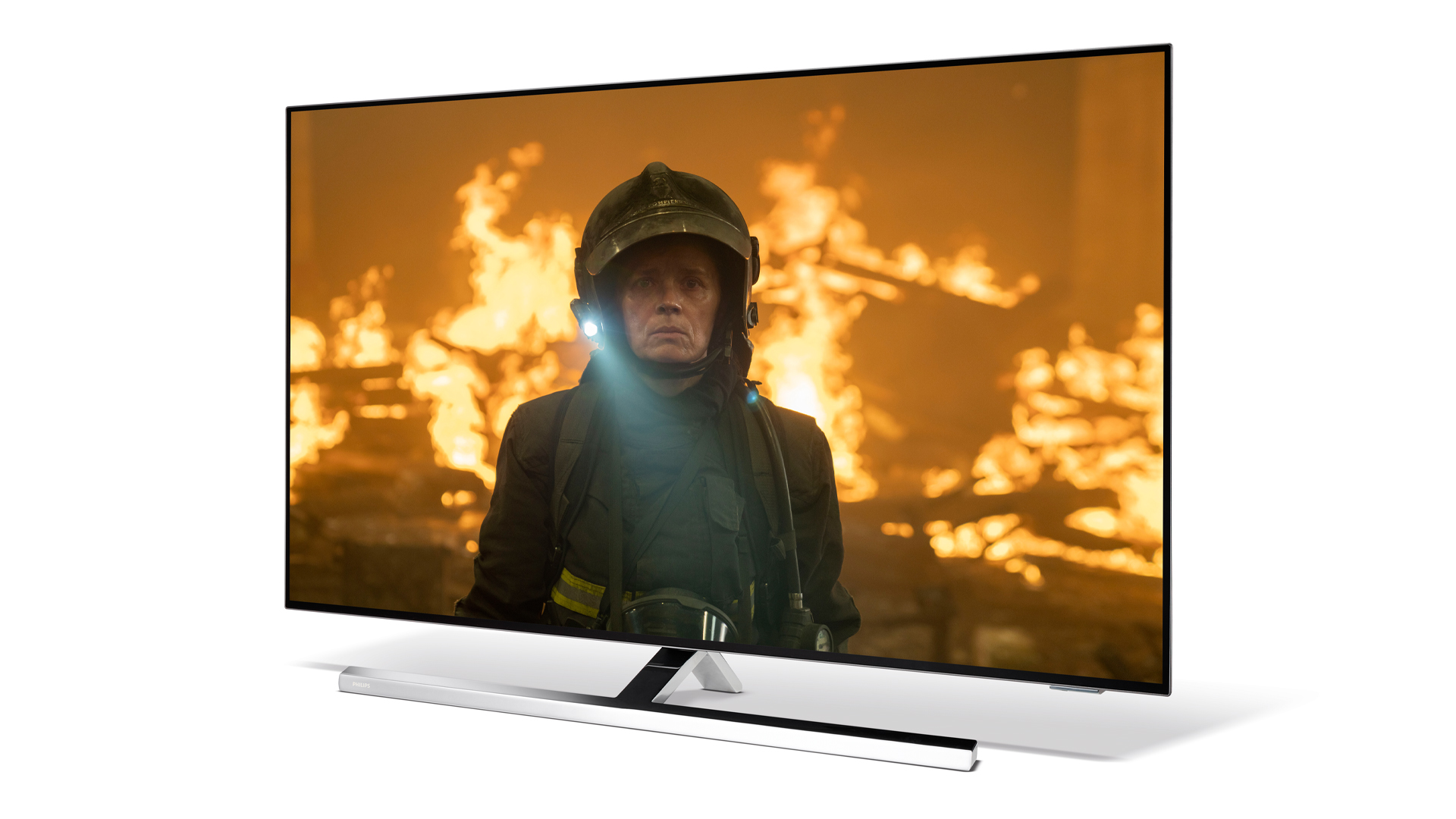
As with last year’s models, the Philips OLED807 takes a bit of tweaking in order to look its best, with most default picture modes looking rather exaggerated, particularly where sharpness is concerned, and most of the more authentic presets proving a bit soft and flat.
With Dolby Vision content, for example, the Dolby Vision Dark setting looks just a bit dull, but switch to Dolby Vision Bright and a load of extra processing is added that makes everything look a bit forced. Our preference is to stick with Dolby Vision Bright but to switch off Ultra Resolution and drop the Sharpness setting a few points. You’ll also want to tweak the motion processing, but we’ll get to that in a bit.
Make those changes and the Philips OLED807’s picture performance is glorious. Playing Top Gun: Maverick, the image pops from the screen in a way that even the superb Sony A90K can’t match. There’s a crispness that makes everything more solid and three-dimensional, and a punchiness to bright highlights and colours that dazzles in the best possible way. Blacks, meanwhile, are as deep as can be, but there’s actually more detail in the shadowiest parts of the picture than from even the strongest rivals. This combination of thrilling contrast and subtle insight is, without doubt, the Philips’ greatest strength.
Switching to Thor: Love And Thunder, again in Dolby Vision, and any fears that the OLED807 is rolling-off detail in the brightest parts of the picture are quickly put to rest. The moon above Asgard during the night time attack is even brighter than it is from the Sony A90K, but it’s just as detailed in its shading. The lights of the town, meanwhile, punch through the darkness with significantly more impact, and Thor’s armour is richer in its gold colouring, more magnificently reflective and more sharply defined.
Moving away from Dolby Vision to an HDR10 version of No Time To Die, our preference is to start with the Filmmaker Mode but add a touch of Sharpness and switch the HDR Perfect setting from Minimum to Medium. What’s most noticeable here is that while the Philips remains crisp and bright, it’s also got a lovely way with colours. Skin tones are vibrantly lifelike without looking exaggerated, and the cinematic warmth that with some TVs results in a false redness creeping into picture elements is kept in check, so the sky above Matera is still beautifully blue and Bond’s tan suit is, well, tan, and not a smidge pink.
Colour is a little trickier when you drop to SDR, and it becomes a little harder to find the right balance between overly dull and overly vibrant. It is there, though, and with a little effort (again, either add some sharpness and vibrancy to Filmmaker Mode or take it out of the Home Cinema preset) you can get the OLED807 to produce a fabulously satisfying yet subtle image. And even standard-def signals are handled with control if you avoid the more aggressively processed picture presets.
Circling back to the motion processing, the Philips OLED807’s handling of motion is largely excellent but is once again lacking a ‘Goldilocks’ setting. The Movie setting is superb the vast majority of the time, producing really smooth and sharp panning shots, such as the one across Matera’s cemetery in No Time To Die, but skilfully avoiding the soap opera effect. That said, just once in a while a character’s movement will look, for an instant, over-sharpened or a touch shimmery. These moments are few and far between, but they will push some owners to switch to the Pure Cinema setting despite the bit of blur and judder this brings with it. Both settings are very good, but the Sony A90K doesn’t force the same sort of choice – it’s that well-judged.
Sound
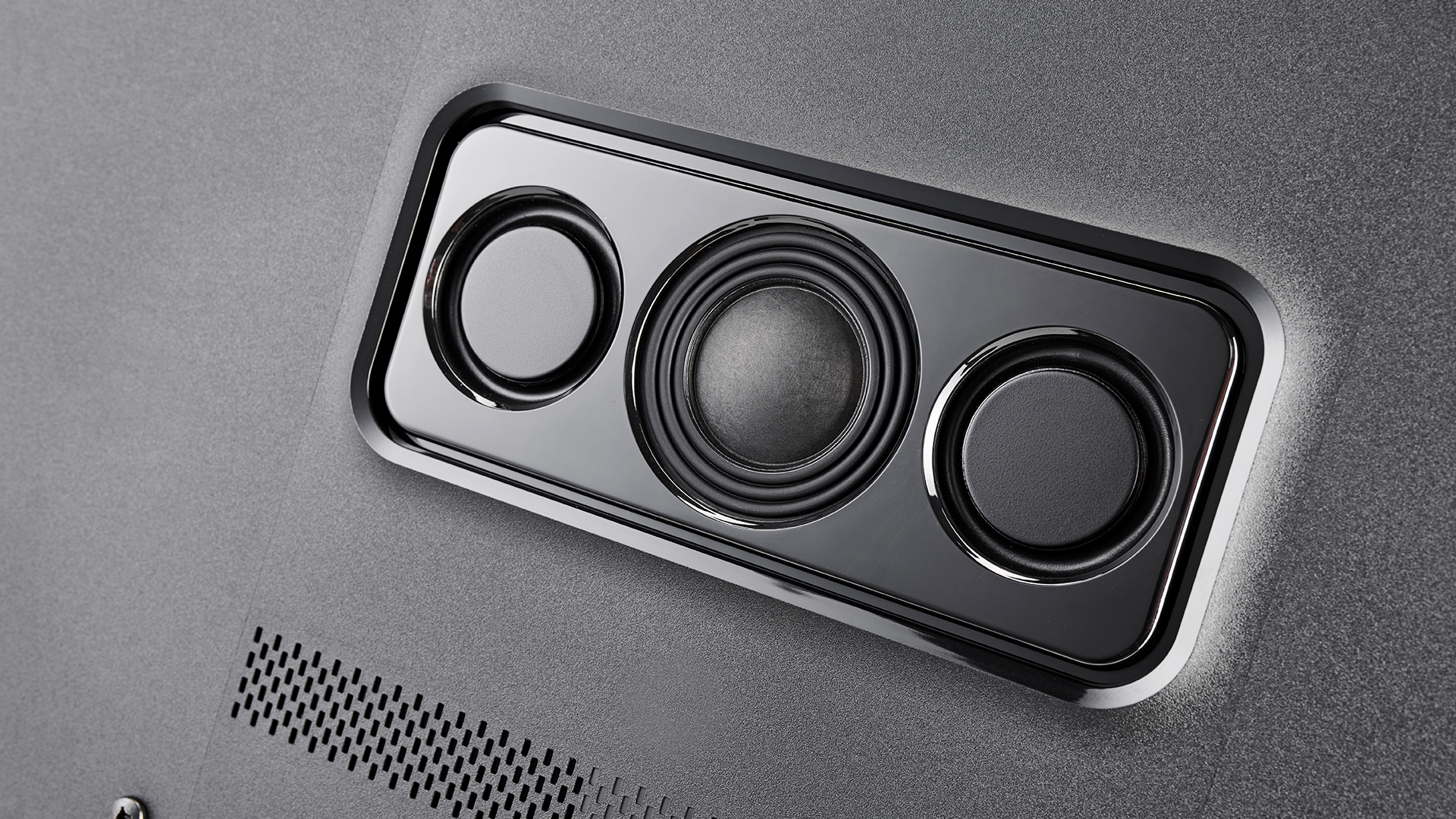
The OLED807 has two extra drivers over the OLED806 it replaces, resulting in a 4.1 system rated to a claimed, impressive-sounding 70W in total. And the TV does actually sound pretty impressive, as long as you avoid the default Entertainment setting, which adds a slightly synthetic edge to some sounds and seems to exaggerate bass to a degree that makes voices sound a bit unnatural.
The Original setting is much better; clean and authentic, and still with a good deal more bass than is typical of a TV. While it doesn’t have the same degree of projection into the room or the sound-to-screen connection that you get from the Sony A90K and its vibrating panel, the Philips is better in other ways, sounding tighter and better controlled, particularly in the lower frequencies.
While the sound doesn’t stretch into the room a huge amount, there’s a good degree of width and height to the audio, making for an atmospheric presentation that manages to convey the openness of the stormy street outside Bill and Georgie’s house in It, and the echoey storm drain where Pennywise makes his first, disturbing appearance.
Later in the film is the garage scene that we often use as an audio stress test. Here, the Philips does a good job of dynamically keeping pace with the soundtrack as it builds, only levelling off a bit just before the crescendo. The amount of bass provided here is good by TV standards, too, with the OLED807 offering a delivery that’s not only weightier than that of most rivals but more natural and controlled, too.
Of course, even a relatively affordable soundbar will be an improvement over the OLED807’s audio (think Sonos Beam Gen 2), but if you’re determined to make do with whatever built-in speakers your TV comes with, this TV certainly sounds better than most.
Verdict
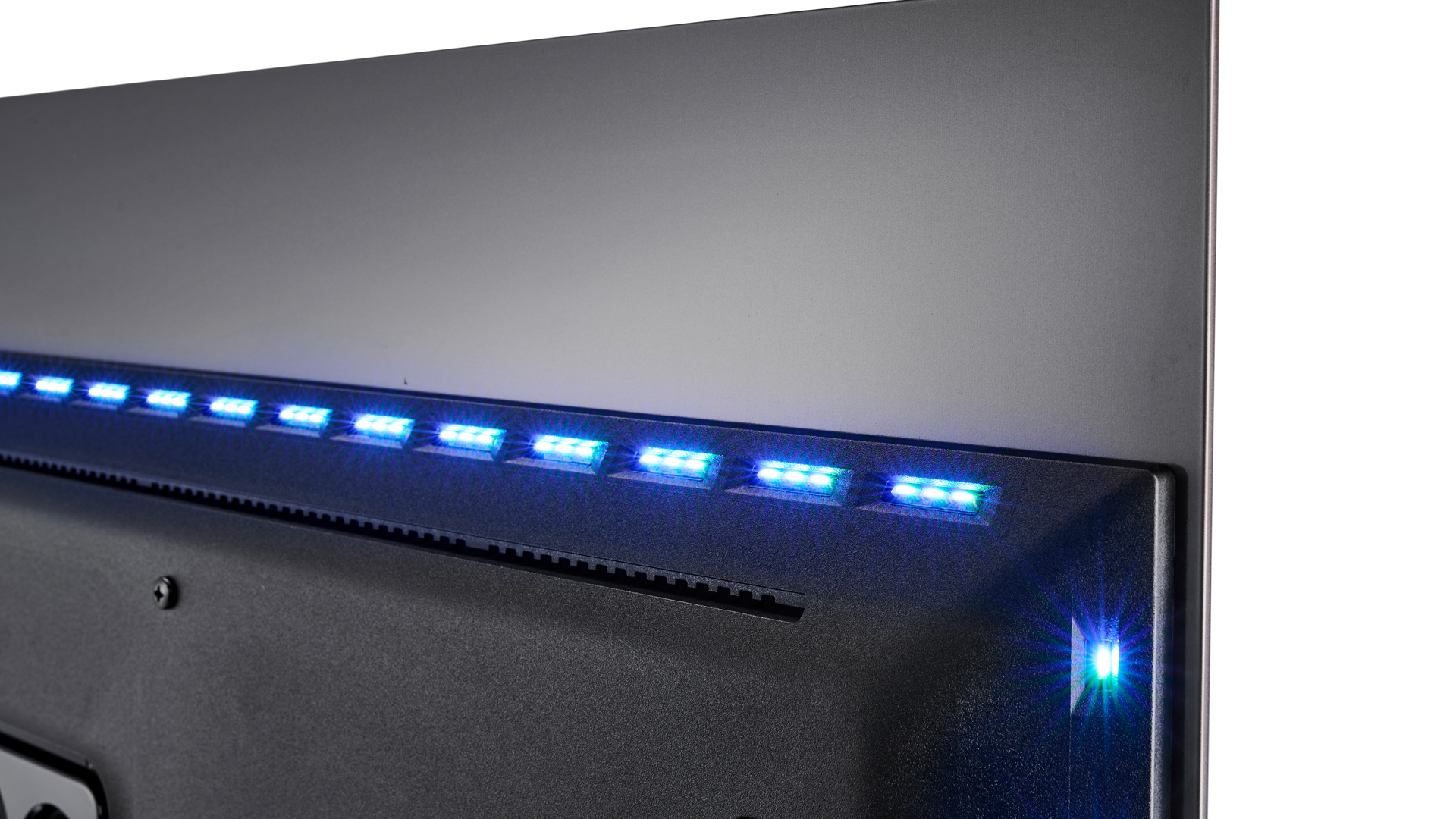
While it still takes a little more effort than it should to get the OLED807 performing at its best, it’s effort that’s well worth making. On performance terms it’s right up there with the very best in class, surpassing them in areas such as punch, sharpness and shadow detail, and yet it costs a fair bit less and is likely to do so all the way through its lifespan.
Those chasing gaming tech specs and a more hassle-free experience will be better served by an LG C2, but if you’re prepared to make a little bit of effort, the OLED807 will reward you with an exceptional performance.
SCORES
- Picture 5
- Sound 4
- Features 5
MORE:
See all the What Hi-Fi? Awards 2022 winners
Read our review of the Sony XR-48A90K
And also consider the LG OLED65C2
Our pick of the best OLED TVs you can buy right now
Tom Parsons has been writing about TV, AV and hi-fi products (not to mention plenty of other 'gadgets' and even cars) for over 15 years. He began his career as What Hi-Fi?'s Staff Writer and is now the TV and AV Editor. In between, he worked as Reviews Editor and then Deputy Editor at Stuff, and over the years has had his work featured in publications such as T3, The Telegraph and Louder. He's also appeared on BBC News, BBC World Service, BBC Radio 4 and Sky Swipe. In his spare time Tom is a runner and gamer.
- Ketan BharadiaTechnical Editor

